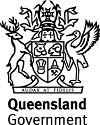Published Wednesday, 02 August, 2023 at 03:53 PM

Deputy Premier, Minister for State Development, Infrastructure, Local Government and Planning and Minister Assisting the Premier on Olympic and Paralympic Games Infrastructure
The Honourable Dr Steven Miles
Short Term Accommodation Review complete
- The State Government will consider creating a register of all AirBnB, Stayz and short term rentals
- The Short Term Accommodation Review and complete and found costal areas in Queensland had the most short term rental accommodation listings
- The review also found dwelling supply has the greatest impact on rental affordability
As part of planning reforms to create more housing supply, the Palaszczuk Government made a commitment to look into the impact of short-term rental accommodation.
University of Queensland, as an independent body, was engaged to assess the impacts of short term rentals on housing affordability and availability across different communities.
In the first quarter of 2023, there were roughly 19,773 active short-term rentals across Queensland. Of those 11,193 were estimated to be used on a permanent basis. Two-thirds of these dwellings are located within the South-East.
The review revealed short-term rentals are most prevalent in high tourism coastal local government areas like Gold Coast, Sunshine Coast, Brisbane, Noosa, Douglas, Whitsunday, Cairns, Moreton Bay, and Townsville.
The review found that short-term rentals have a limited impact on rental affordability. Rather it found dwelling stocks were a significant contributor to explaining rental price increases.
It also found that state-wide restrictions would fail to account for the diverse nature of short-term rental dynamics across Queensland.
The Queensland Government will now consult with the Short Term Residential Accommodation Industry Reference Group and LGAQ on the reviews findings and recommendations, particularly on implementing a short-term rental registration system.
Quotes attributable to Deputy Premier Steven Miles:
“We’re making a number of planning changes as part of our commitment to create more housing supply as the nation experiences tight rental markets.
“As part of increasing housing supply, we wanted a clearer picture of whether short term rentals like AirBnB and Stayz are affecting the tight rental market.
“It is no surprise that the review revealed short-term rentals are most prevalent in high tourism coastal areas like Gold Coast, Sunshine Coast, Brisbane, Noosa, Douglas, Whitsunday, Cairns, Moreton Bay, and Townsville.
“The review found no clear alignment between the suburbs with the highest rent increases and the percentage of dwellings devoted to short-term rental. Instead, dwelling stocks emerged as the significant contributor to explaining rental prices.
“These results show that while short term rentals can affect rental affordability to some extent, its impact is limited.
“The review emphasised the vital role of housing availability and supply in rental prices, highlighting the importance of having enough housing options for our community.
“It also noted that a one-size-fits-all solution could miss the mark in addressing local challenges.
“We have committed to looking into the implementation of a short-term rental registration system, which is a key recommendation of the review.
“A registration system could serve as a tool to support local governments in monitoring short term rental activity and could provide invaluable insights into its impact on our housing market over time, to inform evidence-based regulation.”
ENDS
Media contact: Amy Hunter 0423 651 484
Summary of findings:
- In the first quarter of 2023, there were 19,773 active short-term rentals across Queensland. Of those 11,193 were estimated to be used on a permanent basis. Two-thirds are located within the South-East.
- An increase of 10% in the total number of short term rental listings could lead to a contribution in the range of 0.2% to 0.5% towards rent price changes.
- An 10% increase in the overall stock of dwellings could lead to a noteworthy decrease in rent prices, ranging from 1% to 2%.

